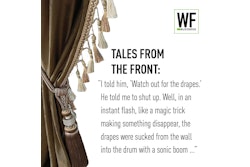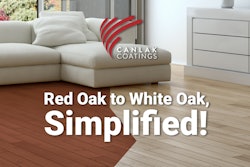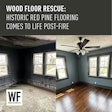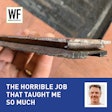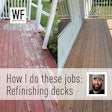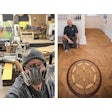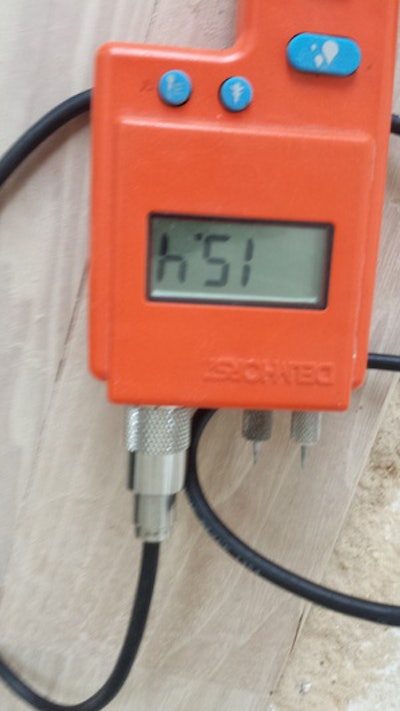
I hate to do job site inspections, it just is not fun.
When will we learn not to do what the builder thinks is right? It is time to get them on the right track and teach them the guidelines that we must follow. Here is a floor I had to go look at, the flooring was installed with no HVAC, rainwater runs down the exterior walls, and the wet work was not done. Here is my moisture meter:
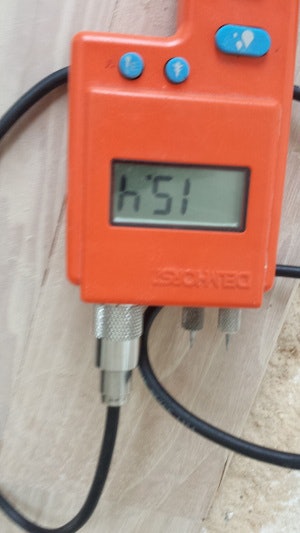
And here’s an exterior shot:

Now the fact is this: Working for builders is hard, and the cut-rate, lowball contractors are hurting us, but you have got to be willing to be firm on a few rules. I measured a 40-board run of this 4-inch flooring; that should be 160 inches, but as the photos show, that run of flooring has grown over 2 inches!



Will it buck up? Will it pull away? Will it fail? All are yes.
Now let me get on my own box and give you a bit of my huge concerns with the battle of staples vs. cleats. I think the staple holds the flooring too tight! It does not let the flooring move with seasonal change without damage to the tongue. As soon as the staple is driven in, it will split the flooring in the nail pocket. A cleat will allow for movement, it will sit in the nail pocket and not damage the flooring. The cleat in this case would have pulled through the flooring, instead of ripping the tongue off the flooring. Some of this flooring could have been saved, but now it is all firewood. So, right about now a debate will start over my statement, but it is true and can be proven. When hardwoods like maple, hickory and most imported hardwoods are installed with a staple, it can damage the flooring. When working with hardwoods like this, I suggest you do not use a staple. I used a 18-gauge, 1¾-long cleat. Now with that said, you must shoot a cleat in at a 6-8 inch not a 8-10 inch pattern; a 16-gauge cleat needs a 8-10 pattern when it is used. I also feel that too many folks over-nail the flooring, not allowing it to move when it needs to. Over-nailing with a cleat will also split the flooring in the nail pocket. I do not, for any reason, use or tell folks to use a staple. Let me know what you think.
So back to the job site inspection. I had to be the one to tell the guy that we cannot honor the claim and we cannot re-use the flooring. It is painful for me when a job-site inspection comes in and I have to be the one to say sorry. No mill wants to be that harmful, but we also cannot be that free with claims. The installer told us that the builder had him install it with no HVAC and that he was not ready to install it for many reasons, but rather than get dropped by the builder, he did it. Now, I do not know if he had the builder sign off on the install, but truth be told, the builder will find a way to hold the contractor accountable, and he will take the hit. That is why you must use a contract that states the job site must be at “industry standards”—a way to hold them responsible, not us.
I feel bad as a floor man, so much that words fail me on how this post should end. Do we walk away from the job? Do we hold firm and get the boot off the job? At what point do we teach the builder we are better informed about flooring? It is the battle here in this market, so much that I have been told many times, “That is how it is done here.” My question is: How many jobs go south? I know that floors are sanded cupped to get it flat, and gaps pop up in the winter, plus crowned floors are all over. So why can’t it be fixed so the floor man can do the job right and get paid well for the work?
















